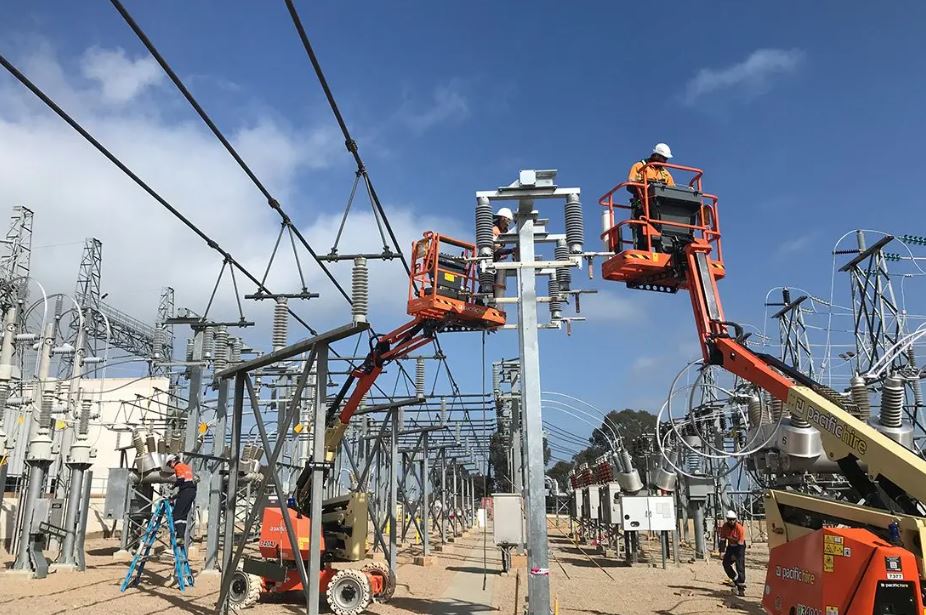Prices for transmission level connection and terminal stations from Transmission Network Service Providers (TNSPs) have shot up, with one Australian developer claiming the quote for a project increased by more than 50% in less than twelve months.
Price differences of this order of magnitude cannot be absorbed by developers and are stalling utility-scale battery projects, the developer told pv magazine Australia. He did not want to be identified due to his ongoing involvement in the industry, but claimed his company has priced roughly 1 GW of battery projects.
By his estimation, TNSP charges have increased by 50% over the past 12 months, whereas materials and labour have increased by roughly 15%.
Moreover, TNSPs are requesting timeframes between 20 months to 24 months to construct terminal stations, precluding the possibility of quickly deploying much-needed storage systems.
Part of this increase almost certainly comes down resourcing issues on the TNSP side, leading networks to put forward high “safe” costs to cover themselves in light of the shortages of contract labour, high inflation, continuing supply chain distributions and the overall booming demand for renewable energy projects.
Pv magazine Australia contacted many of developers in the space, but understandably few would comment on record. Nonetheless, a number confirmed pricing for connections and terminal stations at the transmission level have jumped.
“The prices we’re seeing coming back for connections or terminal stations etc. are varying a lot. They are shooting up,” the developer said. “It’s frustrating.”
“This is the type of thing that stops a lot of [projects] in their tracks.”
While TNSPs are regulated by the Australian Energy Regulator, exactly how companies arrive at their pricing remains opaque. The developer claimed TNSPs offer no breakdown of costs or clear justifications for quotes.
Australia essentially has one TNSP per state – leaving developers with no option to ‘shop around.’ This system was recently critiqued by consultancy Nexa Advisory, though its report focussed on how this monopoly structure negatively impacts the speed and cost at which Australia can build out its transmission assets.
Nonetheless, the Nexa report noted: “There is no reason to believe that the current number of transmission entities, one per state, is the upper limit or optimal number in the NEM [National Electricity Market].”
The report also underlines that Australia’s current transmission markets are largely “protected from competition.”
This structure led the developer to question whether TNSPs were not over-inflating prices to maximise profits. “There’s no recourse.”
The developer claimed high connection and terminal costs were particularly pronounced in Victoria.
A spokesperson for AusNet, Victoria’s TNSP, confirmed pricing increases but insisted the network is competitive.
“While the cost of connection can vary markedly depending upon location and the complexity of the connection, fierce competition ensures connection prices in Victoria are as low as possible,” the spokesperson told pv magazine Australia.
“Transmission Network Service Providers (TNSP’s) are facing the same market pressures and volatility from supply chains, a squeezed contractor market, and increased fixed price risk costs that the entire sector is experiencing, including battery energy storage systems, wind, and solar developments.
“Suppliers and contractors delivering connection infrastructure are experiencing significant demand and resourcing is stretched across all jurisdictions. This has resulted in increased pricing to ensure delivery timeframes and resourcing can be maintained.”
“Risks allocations are being pushed to contractors due to tight delivery timeframes and financier pressures are directly impacting the construction pricing which is being exacerbated by the stretched contractor workforce. Weather, ground conditions, equipment delivery timeframes, availability of transmission network outages, access to site and approvals remain some of the key risks being managed by TNSP’s and contractors.”
“Macroeconomic pressures, which include the inflationary environment impacting labour, equipment and material costs; and increasing interest rates directly impacting the cost of funding; and increased annual land tax and rates charges impacted by the valuation of terminal stations and generation facilities. These macroeconomic factors are directly impacting the connection service charges when connecting into the transmission network for the term of the service, which can be up to 30 years.”
This content is protected by copyright and may not be reused. If you want to cooperate with us and would like to reuse some of our content, please contact: editors@pv-magazine.com.









Great article, thanks Bella.
I also work for a Developer, Owner and Operator who has seen significantly higher than 50% pricing increase on non-contestable connection works.
The majority of projects are built based on meeting a project IRR. The TNSP cost increases have now resulted in several of our projects stalling until either the capex reduces or the revenue increases.